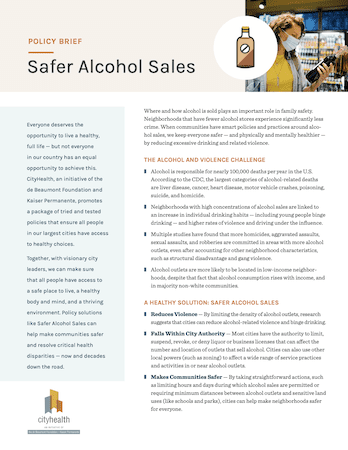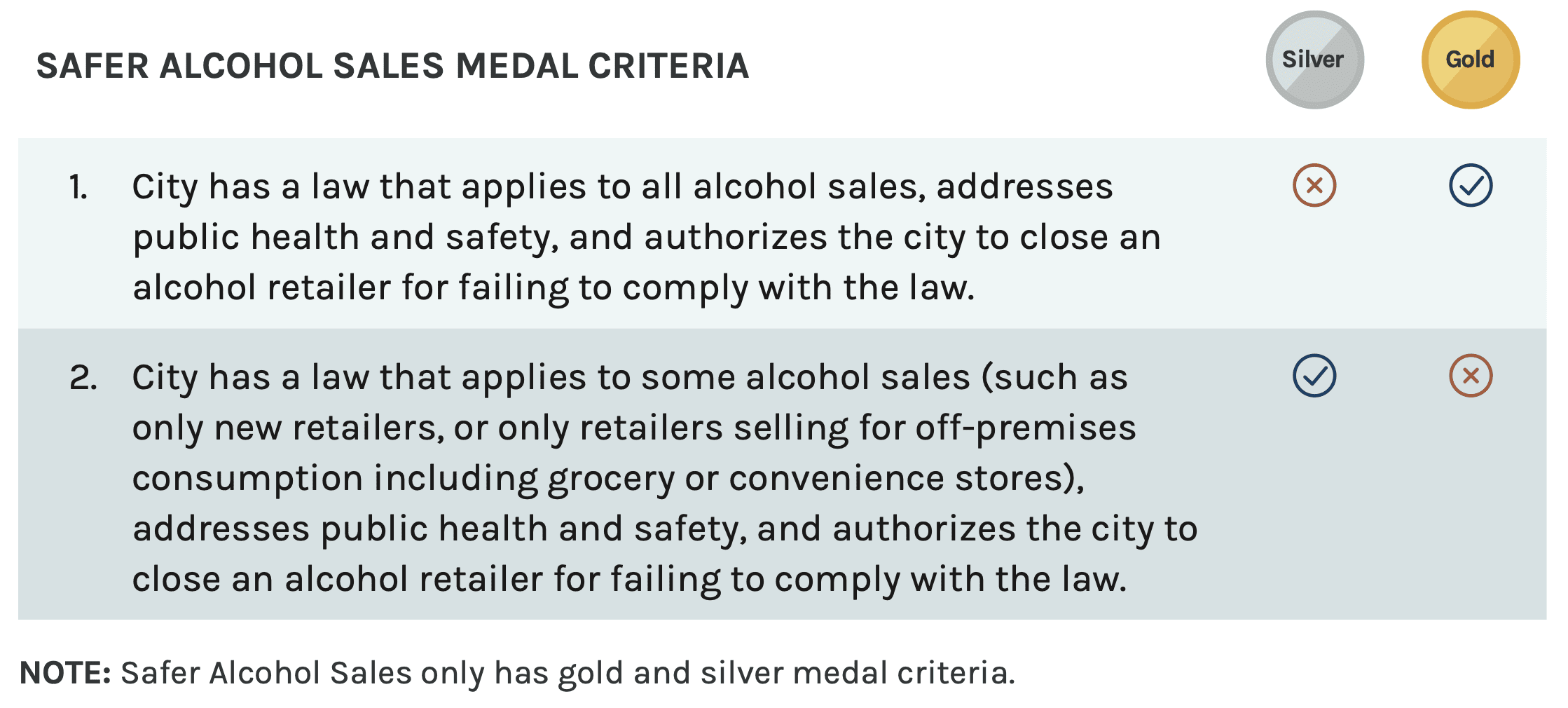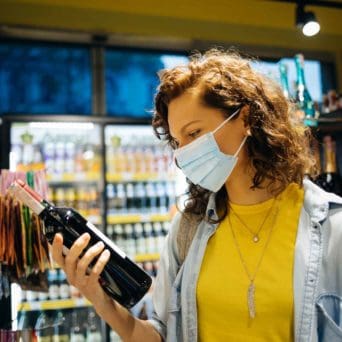This is the tenth blog in our monthly series exploring CityHealth’s 2.0 policy package. Sign up for our newsletter to learn about new policy solutions, tools, and resources.
Alcohol can have significant impacts on both physical and mental well-being. According to the CDC, more than 140,000 deaths a year in the U.S. can be attributed to alcohol consumption — whether due to the long-term health effects of drinking too much over time (including cancer, liver disease, or heart disease), or from binge drinking over a short period of time. Fortunately, city leaders can take action to limit where, how, and when alcohol can be sold through Safer Alcohol Sales policies. In our 2021 Safer Alcohol Sales policy report, we found that when cities have these policies in place, they can improve the health and safety of residents — and help address long standing health disparities.
Alcohol Outlet Density and Health
A neighborhood’s access to alcohol — as characterized by the number and density of alcohol outlets located there — can have serious consequences for the health outcomes of residents. Studies suggest that neighborhoods with high concentrations of places to buy alcohol, for example, are linked to an increase in individual drinking habits — including young people binge-drinking — and higher rates of violence and driving under the influence.
Other studies have demonstrated the link between areas with more alcohol outlets and violent crimes including homicides, aggravated assaults, sexual assaults, and robberies. It’s estimated that the staggering cost of excessive alcohol consumption in the U.S. was almost $250 billion in 2010, the last year for which this data is available.

Safer Alcohol Sales: Investing in Healthy Futures

Download the Safer Alcohol Sales policy brief
Adopting Safer Alcohol Sales policies is a healthy choice for both city leaders and their residents. In addition to improving public health generally, a comprehensive Safer Alcohol Sales policy can also help address health inequities in our communities.
In many cities, alcohol outlets — and, consequently, the negative health outcomes associated with them — are more prevalent in low-income neighborhoods and in majority non-white communities, despite that people with higher incomes drink more alcohol compared with people with lower incomes. Policies that give communities a greater voice in how alcohol is sold — including the ability to limit the density of outlets within their borders — can help safeguard the well-being of communities that have been disproportionately exposed to health risks associated with alcohol use.
Research suggests that even straightforward actions like limiting the number of hours alcohol sales are permitted, or requiring minimum distances between outlets and community spaces like schools and parks, can help to mitigate harms like binge-drinking and alcohol-related violence. When local leaders invest in Safer Alcohol Sales policies, they’re investing in health equity and the long-term well-being of their cities.
Earning CityHealth Gold
Starting in 2022, CityHealth will assess the nation’s 75 largest cities on their Safer Alcohol Sales policies. Cities can earn a gold or a silver medal based on how the city performs on two key criteria:

CityHealth is a resource for city leaders, policymakers, and advocates pursuing policy change that can help all residents live healthy, full lives. Have a question about Safer Alcohol Sales or any of our other policies? Please feel free to send us an email, and join us to learn more about the tools, research, and technical assistance opportunities available from CityHealth and our partners.



 Katrina Forrest, J.D., and Catherine Patterson, MPP, are CityHealth’s Co-Executive Directors.
Katrina Forrest, J.D., and Catherine Patterson, MPP, are CityHealth’s Co-Executive Directors. 

